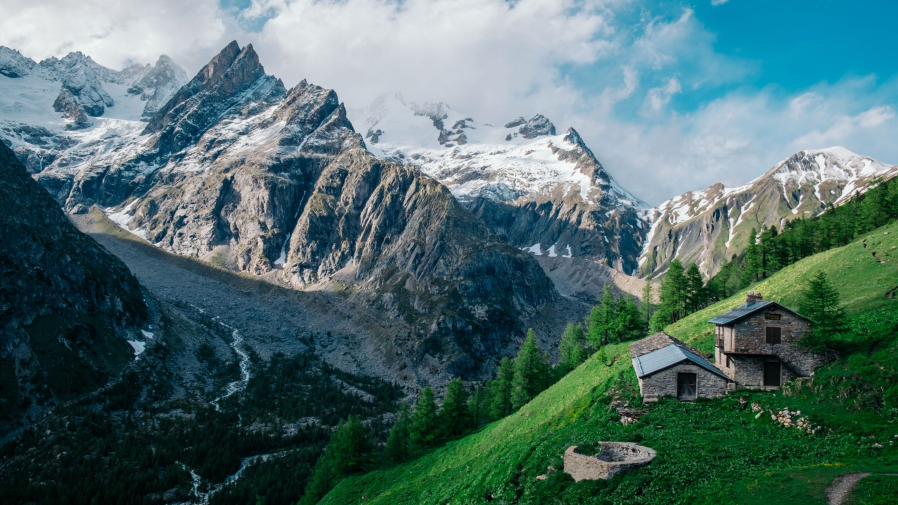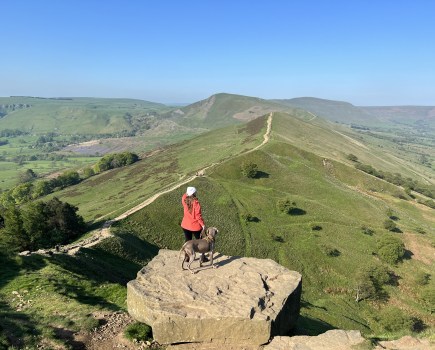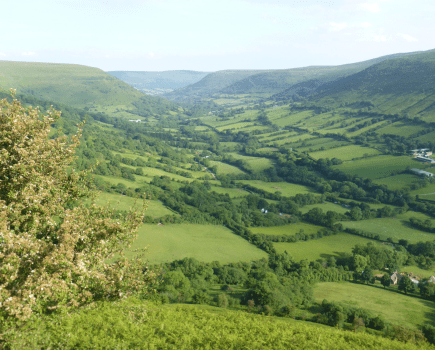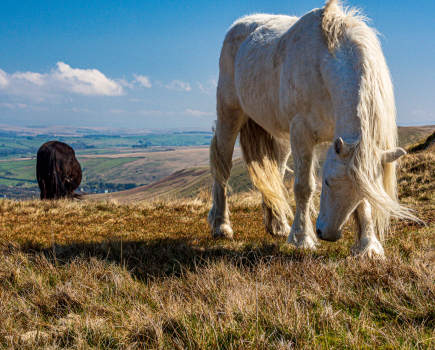The Tour du Mont Blanc is 100 miles of tough – but not technical – high panorama mountain drama. There’s a reason it’s one of the most popular treks in Europe – but it does have a lesser trodden alternative, too.
You don’t have to get on a plane to find a bucket-list worthy trek. The Tour du Mont Blanc, one of Europe’s most famous circular routes, is just a day’s train ride away. And with 165km / 100 miles of mountainous trekking to enjoy, you get a lot of route for your modest carbon footprint.
Circumnavigating Mont Blanc will give you a good idea of just how epic in scale the Alps’ highest mountain really is. The Tour takes you through three countries – France, Italy and Switzerland – climbing more than the height of Everest and linking a string of stunning high passes along the way. Each of the eleven standard stages is packed with high panoramas, stiff ascents and a scenic pick-and-mix of different landscapes. It’s tough without being technical – although, this being the hiker-friendly Alps, if it does get too tough then there’s always a mountain refuge on hand to offer you a slap-up meal or a mug of cold beer.
Tour du Mont Blanc: the stats
Start/end: Chamonix, France | Length: 165km / 100 miles | Ascent: 8,917m | Season: June – September | Difficulty: Medium
The journey
For scenery, challenge, wildlife and general mountain atmosphere, the Tour du Mont Blanc can rival pretty much any long-distance route in the world. The views come thick and fast throughout the circuit – the peak-packed panorama from the Col de la Croix du Bonhomme, the giant pinnacle of the Aiguillette d’Argentiere and the thrilling exposure from the metal ladders that follow it, the balcony path below Mont Favre with Oscar-winning views of Mont Blanc, the shrinking but still spectacular line-up of glaciers….
“The whole thing is a highlight,” says James Russell, who walked the TMB in August. “Exhausting and painful at times, but the rewards are worth it. From the constant changes in the scenery around different corners and brows to meeting some lovely people.”
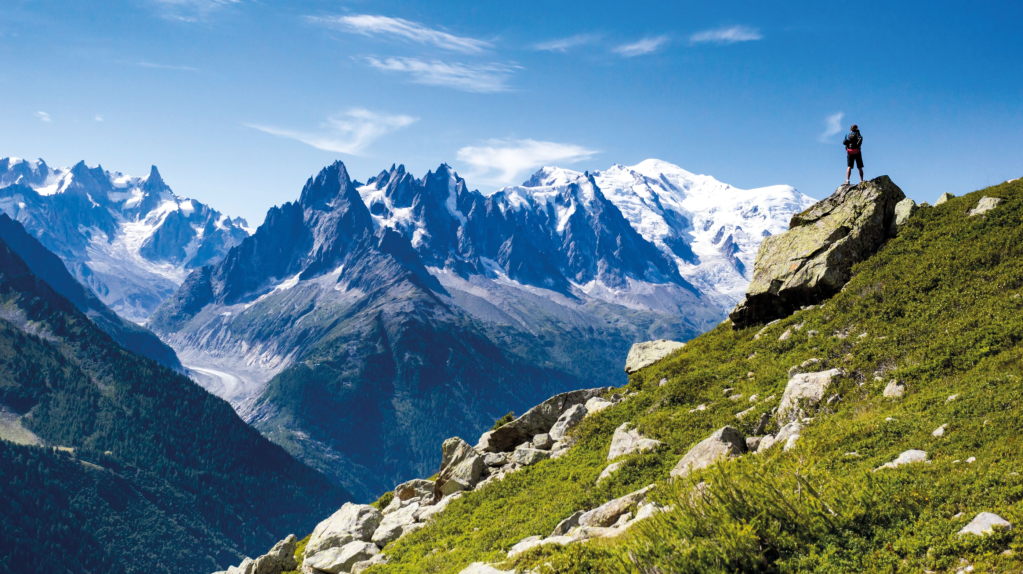
On the Tour du Mont Blanc. Credit: Shutterstock
The Tour du Mont Blanc welcomes more than 10,000 walkers every year. That’s a lot of people to avoid if you want to experience the best of this bucket list trek without bonjour-ing fellow walkers every two minutes. Your best bet is to travel outside July and August – although if you are constrained to the summer, think about hiking the TMB clockwise against the flow and mixing up the traditional stages to stay in lesser-visited accommodation (mountain huts should be booked a few months in advance for the summer months).
It’s easier to trek sustainably on the TMB than it is on many other bucket list routes. Erosion and litter are both an issue, but it’s relatively straightforward to stick to the well-constructed paths, use rubber stoppers on your walking poles and, once again, employ that trusty trowel. Trains and buses are an excellent alternative to planes and cars. It takes less than five hours from Paris to St Gervais les Bains with a change at Bellegarde, and from there it’s just a short train journey to the start of the TMB at Chamonix. For a super luxurious, low-carbon start to your trek, though, jump on the sleeper train from Paris to St Gervais les Bains and snooze the night away in a comfortable couchette.
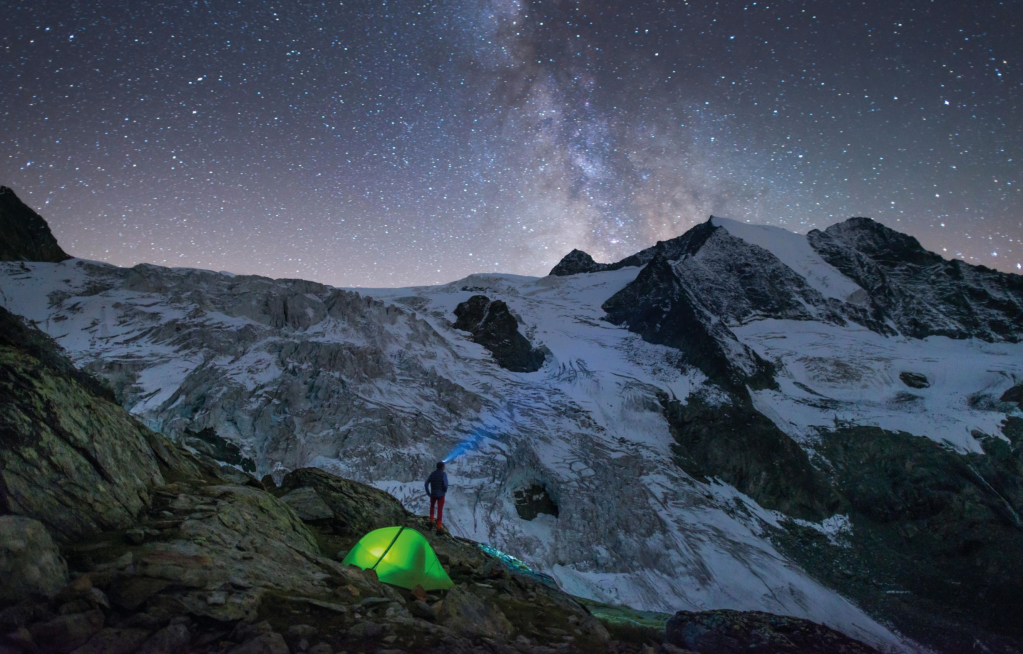
A wild camp on Walkers’ Haute Route in the Alps. Credit: Shutterstock
Tour du Mont Blanc: an alternative route
For something a little less popular and even more epic, the Walker’s Haute Route (a version of the Classic Haute Route accessible to non-mountaineers) also begins in Chamonix and serves up delectable views of Mont Blanc. Like the TMB, it strings together a selection of high mountain passes (11 in total) and involves plenty of challenging ascent. But it’s longer (221km / 137 miles) and linear, ending in Zermatt with celebratory views of the Matterhorn to enjoy.
If you want to explore other international treks of a lifetime, check out these other bucket list treks and our expert advice on how to hike them – as well as their lesser trodden alternatives.

